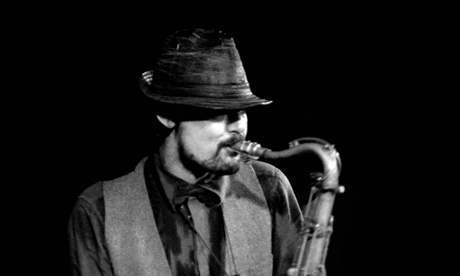Acoustic Ladyland – review

Pete Wareham on saxophone
ACOUSTIC Ladyland emerged five years ago from North London’s F-ire Collective with the initial idea of revamping Hendrix tunes. Their first album Camouflage was launched at the Vortex’s old location on Stoke Newington’s Church Street in summer 2004. How times have changed. The Vortex’s former building now houses a Nando’s, and the club has moved to Dalston’s iridescent Culture House on Gillett Square.
Acoustic Ladyland has also transmogrified. If thematic development on acoustic instruments suited the Church Street venue’s wooden floor and Country Life tables, then the band’s new sound befits the Culture House’s angular façade and exposed metal ceiling. High volume, heavy distortion, relentless pace, and melodies stripped bare of all embellishment now greet hordes of skinny jeans and Top Man fedoras.
While leader Pete Wareham (sax) and Seb Rochford (drum kit) have remained constant, other personnel changes illustrate the band’s transition. Ruth Goller’s electric bass has replaced Tom Herbert’s upright, whilst Tom Cawley, initially on piano then Nord synthesiser, has been replaced by Chris Sharkey on guitar. While the band often sounded like there was a guitar in the mix, one got the impression that they were making a point of not having one. The addition of Sharkey and his copious pedal collection means no more pretending. While guitars in jazz are nothing new, Sharkey’s overdrive settings may well be.
The band’s set comprised mainly material from their forthcoming album. While the rhythm section lacked the sympathy present in sister band Polar Bear, this wasn’t an environment predisposed to subtlety. Wareham’s saxophone curtly instantiated whatever melodic fragments could be assimilated from Sharkey’s distorted backdrop, favouring strained bleats over drawn out runs. Each song was short and written for maximum impact, with Sharkey’s manic rhythm work and Rochford’s incessant pounding ensuring the skinny jeans were happy.
Such excitement though was perhaps created at the expense of two things: melodic elaboration and dynamic range. Wareham, a formidable soloist, never really did much apart from repeat the main hook. Sharkey got one look in that almost descended into a pentatonic blow out, but was mainly content with machine-gunning riffs. The entire gig was loud and fast. There was no tension and release simmer-and-boil-over, just constant heat. Wareham and Rochford, the two main protagonists, get ample chance for this in Polar Bear however. Acoustic Ladyland is where they get to play heavy and stark.
Indeed, in its current incarnation the band is perhaps closer to the spirit of Hendrix than its initial guise. They are now playing original material and bringing new idioms to bear on their earlier sound. Whether whatever non-jazz influences in vogue today transcend mere fashion is the question.
Whatever the answer, Acoustic Ladyland is tight and when Wareham’s sax is viewed as a surrogate vocalist, rather than the through the prism of straight-ahead jazz, every brash three minutes makes more sense. Just don’t get too hung up on the “punk-jazz” hybrid nomenclatures being bandied, and don’t expect the melancholic introspection of Polar Bear.
